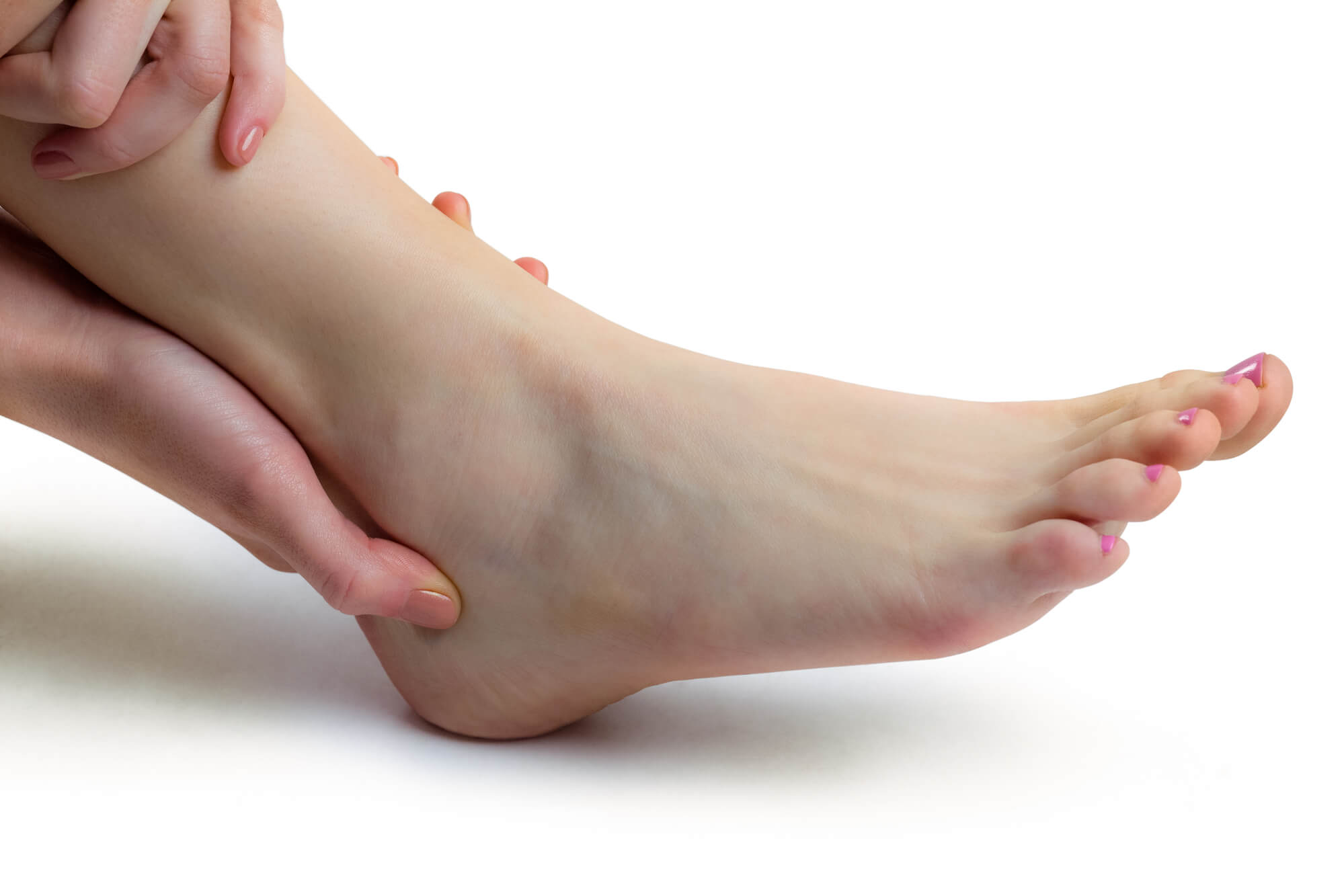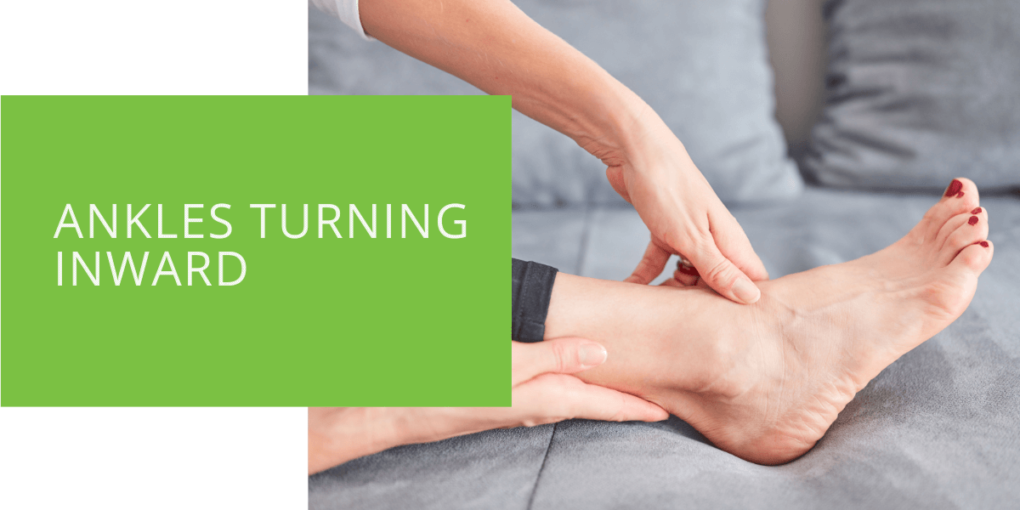Ankles Turning Inward: Causes, Symptoms & Treatment
Are you tired of dealing with discomfort and instability caused by ankles turning inward? Ankle turning inward, also known as ankle pronation or overpronation, is a common foot condition that can lead to complications if left untreated. In this comprehensive guide, we will explore the causes, symptoms, and treatment options for ankle turning inward, equipping you with valuable insights to address this issue effectively.
What Causes Ankles to Turn Inward?
- Genetic factors and foot structure: Some individuals may have inherited foot structures predisposing them to overpronation. For example, flat feet or low arches can increase the likelihood of the ankle rolling inward.
- Muscular imbalances and weaknesses: Weaknesses or imbalances in the muscles and tendons of the foot and lower leg can affect their ability to support the ankle joint properly. This can result in excessive pronation and ankle instability.
- Previous injuries and trauma: Ankle injuries, such as sprains or fractures, can damage the ligaments and weaken the ankle's stability. This can increase pronation and a higher risk of subsequent ankle injuries.
- Overpronation and flat feet: Overpronation occurs when the foot rolls inward excessively during the gait cycle. This causes the arches to flatten, putting strain on the ligaments and leading to the ankle turning inward.
- Effects of improper footwear: Wearing shoes that lack proper arch support or have inadequate stability can contribute to ankle pronation. Ill-fitting footwear or high heels can further exacerbate the issue.
Recognizing the Symptoms
Identifying the symptoms associated with ankles turning inward can help in early detection and timely intervention. Keep an eye out for the following signs:
- Visible signs of ankles turning inward: Observe your ankles in a relaxed standing position. If you notice that your ankles tilt inward or that the arches appear flattened, it may indicate ankle pronation.
- Ankle pain and discomfort: Individuals with the ankle turning inward often experience pain or discomfort on the inner side of the ankle joint. This can range from mild to severe and may worsen with activity or prolonged standing.
- Frequent ankle sprains and instability: Ankle instability is a common consequence of ankle pronation. The ligaments become stretched and weakened, making the ankles more susceptible to sprains and creating instability.
- Changes in gait and walking pattern: Overpronation can alter how you walk or run. Look for signs such as the foot rolling inward excessively, an inward rotation of the lower leg, or an asymmetrical gait pattern.

Complications and Risks
Neglecting the ankle turning inward can lead to various complications, including:
- Chronic ankle instability: Persistent ankle pronation can weaken the supporting structures of the ankle, resulting in chronic instability. This can further increase the risk of ankle sprains and impair daily activities.
- Development of ankle joint arthritis: The abnormal movement caused by ankle pronation can accelerate the wear and tear of the ankle joint. Over time, this can contribute to the development of ankle arthritis, leading to pain, stiffness, and reduced mobility.
- Increased risk of falls and injuries: Ankle instability due to overpronation can compromise balance and stability, increasing the likelihood of falls and related injuries.
- Impact on overall foot and lower limb alignment: Ankle turning inward can disrupt the natural alignment of the foot and lower limb. This misalignment can cause additional stress on the joints, muscles, and tendons, potentially leading to knee pain, hip discomfort, and lower back pain.
Diagnosis and Evaluation
If you suspect that your ankles are turning inward, it is important to consult with a qualified podiatrist for a comprehensive evaluation. The podiatrist will perform a physical examination and consider your medical history to determine the underlying causes of your ankle pronation. Additionally, they may conduct the following assessments:
- Gait analysis and foot posture assessment: This involves observing your walking pattern and assessing how your foot and ankle function during motion. It helps identify abnormal movement patterns and excessive pronation.
- Imaging tests: X-rays, MRIs, or other imaging techniques may be used to evaluate the internal structures of your foot and ankle. These tests can help rule out structural abnormalities or assess the severity of existing conditions.
The podiatrist can tailor a treatment plan to address your specific needs by accurately diagnosing the ankle turning inward.
Treating Ankle Turning Inward
The treatment approach for ankle turning inward aims to alleviate symptoms, improve ankle stability, and prevent further complications. Depending on the severity and underlying causes, both conservative and advanced treatment options may be recommended.
Conservative Treatments
- Custom orthotics and arch supports: Custom-made orthotics or arch supports can provide additional support to the foot and help correct abnormal pronation. These devices are designed to align the foot properly and reduce excessive rolling inward.
- Strengthening and stretching exercises: Specific exercises can target the muscles and tendons of the foot and lower leg, improving their strength and flexibility. This can enhance stability and reduce overpronation.
- Physical therapy and rehabilitation: Working with a physical therapist can help improve ankle strength, balance, and range of motion. Therapeutic exercises, manual techniques, and other modalities may be used to address ankle pronation.
- Footwear modifications and supportive shoes: Wearing shoes with adequate arch support, stability, and cushioning can help control pronation and reduce symptoms. In some cases, shoe inserts or heel wedges may be recommended to provide additional support.
Advanced Treatment Options
- Ankle bracing and taping techniques: Ankle braces or taping can provide external support to the ankle joint, enhancing stability and preventing excessive pronation. These techniques are particularly useful during physical activities or while recovering from an ankle injury.
- Ultrasound therapy and electrotherapy: These modalities can help reduce pain and inflammation in the affected area. They promote healing and relieve the discomfort associated with the ankle turning inward.
- Prolotherapy or platelet-rich plasma (PRP) injections: In some cases, injections of prolotherapy or PRP may be considered to stimulate the healing process and strengthen the damaged ligaments or tendons.
- Surgical interventions: Surgical procedures are typically reserved for severe cases of ankle turning inward that have not responded to conservative treatments. The specific procedure will depend on the underlying causes and individual circumstances.

Preventing Ankle Turning Inward
While certain factors contributing to ankle pronation may be beyond our control, there are steps we can take to prevent or minimize its effects:
- Choosing appropriate footwear with proper arch support: Opt for shoes that provide adequate arch support and stability. Look for a supportive midsole, firm heel counter, and cushioned insole.
- Regular foot and ankle exercises: Strengthening exercises for the foot and lower leg can help improve stability and prevent excessive pronation. Incorporate exercises such as calf raises, ankle circles, and toe curls into your regular exercise routine.
- Maintaining a healthy weight: Excess weight can put additional stress on the feet and contribute to overpronation. Maintaining a healthy weight can reduce the strain on your ankles and promote proper alignment.
- Avoiding activities aggravating ankle instability: High-impact activities, such as running on uneven surfaces or participating in sports with quick directional changes, can exacerbate the ankle turning inward. Modify your activities or seek guidance on proper techniques to minimize the risk of injury.
By implementing these preventive measures, you can support the health and stability of your ankles, reducing the likelihood of ankle pronation and related complications.
When to Seek Professional Help
If you experience persistent ankle pain, frequent ankle sprains, or notice significant changes in your foot and ankle alignment, seeking professional help from a qualified podiatrist is crucial. They can thoroughly evaluate, diagnose the underlying causes, and develop an individualized treatment plan tailored to your needs.
Ignoring the ankle turning inward can lead to long-term complications and negatively impact your quality of life. Early intervention and appropriate treatment can help manage symptoms, improve ankle stability, and prevent further issues.
Conclusion
Ankle turning inward or overpronation can significantly impact the foot and lower limb alignment, leading to complications and discomfort. Understanding the causes, symptoms, and treatment options for ankle pronation is crucial for seeking timely intervention and preventing further complications.
By addressing the ankle turning inward with the help of a podiatrist, you can explore conservative treatments such as custom orthotics, exercises, and footwear modifications. Advanced treatment options or surgical interventions may be considered in more severe cases. Furthermore, implementing preventive measures such as appropriate footwear, regular exercise, and weight management can play a key role in reducing the risk of ankle pronation.
Remember, your podiatrist is the best resource for personalized advice and guidance based on your condition. By taking proactive steps and seeking professional help when needed, you can support the health and stability of your ankles, ensuring optimal foot function and overall well-being.

